Lab Saphire
A Conserved Basic Patch and Central Kink in the Nipah Virus Phosphoprotein Multimerization Domain Are Essential for Polymerase Function.
Longitudinal analysis of the human B cell response to ebola virus infection
Diverse morphology and structural features of old and new world hantaviruses
Convergent structures illuminate features for germline antibody binding and pan-Lassa virus neutralization
Antibody therapy for Lassa fever
Sudan ebolavirus VP35-NP crystal structure reveals a potential target for pan-filovirus treatment
SARS-CoV-2 Omicron (B.1.1.529) shows minimal neurotropism in a double-humanized mouse model
Reporter Assays for Ebola Virus Nucleoprotein Oligomerization, Virion-Like Particle Budding, and Minigenome Activity Reveal the Importance of Nucleoprotein Amino Acid Position 111
A Vaccine against Ebola Virus
Analysis of a Therapeutic Antibody Cocktail Reveals Determinants for Cooperative and Broad Ebolavirus Neutralization
Evidence for distinct mechanisms of small molecule inhibitors of filovirus entry
Tracking Changes in SARS-CoV-2 Spike: Evidence that D614G Increases Infectivity of the COVID-19 Virus
Analysis of oligomeric and glycosylated proteins by size-exclusion chromatography coupled with multiangle light scattering.
Structural biology in the fight against COVID-19.
Lifted Up from Lockdown
Evidence for distinct mechanisms of small molecule inhibitors of filovirus entry.
Prominent neutralizing antibody response targeting the ebolavirus glycoprotein subunit interface elicited by immunization.
Immunological memory to SARS-CoV-2 assessed for up to 8 months after infection.
Cellular mRNA triggers structural transformation of Ebola virus matrix protein VP40 to its essential regulatory form.
A Fc engineering approach to define functional humoral correlates of immunity against Ebola virus.
An intranasal vaccine durably protects against SARS-CoV-2 variants in mice.
Proteo-genomic analysis identifies two major sites of vulnerability on ebolavirus glycoprotein for neutralizing antibodies in convalescent human plasma.
Ebola vaccine-induced protection in non-human primates correlates with antibody specificity and Fc-mediated effects.
Defining variant-resistant epitopes targeted by SARS-CoV-2 antibodies: a global consortium study.
Fab and Fc contribute to maximal protection against SARS-CoV-2 following NVX-CoV2373 subunit vaccine with Matrix-M vaccination.
SARS-CoV-2 infection generates tissue-localized immunological memory in humans.
Rapid discovery of diverse neutralizing SARS-CoV-2 antibodies from large scale synthetic phage libraries.
Novel attempts launched toward universal sarbecovirus vaccine.
CD164 is a host factor for lymphocytic choriomeningitis virus entry
Pan-ebolavirus serology study of healthcare workers in the Mbandaka Health Region, Democratic Republic of the Congo
mRNA-1273 vaccine-induced antibodies maintain Fc effector functions across SARS-CoV-2 variants of concern
Asymmetric and non-stoichiometric glycoprotein recognition by two distinct antibodies results in broad protection against ebolaviruses
Stopping pandemics before they start: Lessons learned from SARS-CoV-2
Functional interactomes of the Ebola virus polymerase identifed by proximity proteomics in the context of viral replication
Development and Structural Analysis of Antibody Therapeutics for Filoviruses
Measles and Nipah virus assembly: Specific lipid binding drives matrix polymerization
Structure of the rabies virus glycoprotein trimer bound to a prefusion-specific neutralizing antibody
Delineating the mechanism of anti-Lassa virus GPC-A neutralizing antibodies
mRNA-1273 and BNT162b2 COVID-19 vaccines elicit antibodies with differences in Fc-mediated effector functions
Inducing broad-based immunity against viruses with pandemic potential
Neutralizing Antibodies against Lassa Virus Lineage I
Glycan shield of the ebolavirus envelope glycoprotein GP
A circular MRNA vaccine prototype producing VFLIP-X spike confers a broad neutralization of SARS-CoV-2 variants by mouse sera.
Proximity interactome analysis of Lassa polymerase reveals eRF3a/GSPT1 as a druggable target for host-directed antivirals
A cocktail of protective antibodies subverts the dense glycan shield of Lassa virus
IgG-like bispecific antibodies with potent and synergistic neutralization against circulating SARS-CoV-2 variants of concern
Lessons from the pandemic: Responding to emerging zoonotic viral diseases-a Keystone Symposia report
Coronavirus Immunotherapeutic Consortium Database
Structure if the Inmazeb cocktail and resistance to Ebola virus escape
Structural basis for antibody-mediated neutralization of lymphocytic choriomeningitis virus
Bivalent intra-spike binding provides durability against emergent Omicron lineages: Results from a global consortium
Spatial and functional arrangement of Ebola virus polymerase inside phase-separated viral factories
ChAdOx1 nCoV-19(AZD1222) vaccine-induced Fc receptor bindingtracks with differential susceptibilityto COVID-19
The in situ Structural Approach to Reveal the Filovirus Budding Mechanism
B cell and antibody targeting of transplant alloantigen epitopes is supported by both self and allo-recognition
Potent Omicron-neutralizing antibodies isolated from a patient vaccinated 6 months before Omicron emergence
A Lassa virus mRNA vaccine confers protection but does not require neutralizing antibody in a guinea pig model of infection
The C-terminus of Sudan ebolavirus VP40 contains a functionally important CXnC motif, a target for redox modifications
Identification of mouse CD4+ T cell epitopes in SARS-CoV-2 BA.1 spike and nucleocapsid for use in peptide:MHCII tetramers
Aerosol Delivery of SARS-CoV-2 human monoclonal antibodies in macaques limits viral replication and lung pathology
The Arenaviridae Family: Knowledge Gaps, Animal Models, Countermeasures, and Prototype Pathogens
Structure of a SARS-CoV-2 spike S2 subunit in a pre-fusion, open conformation
The evolution and determinants of neutralization of potent head-binding antibodies against Ebola virus
LJI scientists win ‘Prebys Research Heroes’ funding
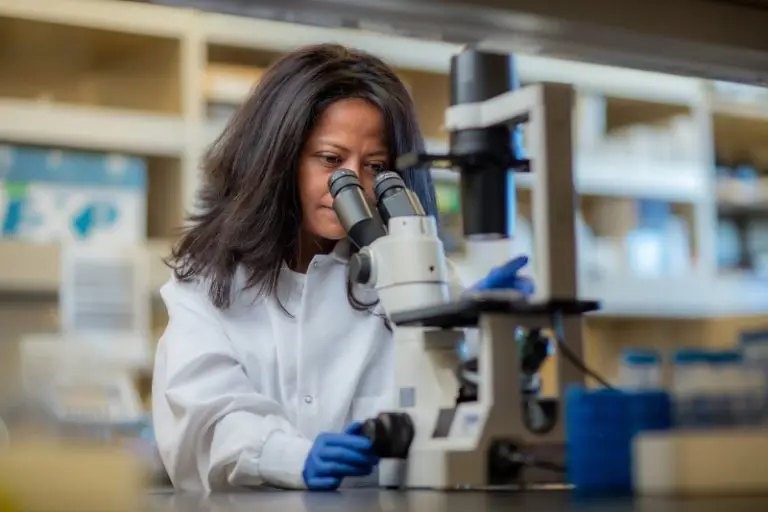
Prebys Foundation celebrates ground-breaking female researchers
Erica Ollmann Saphire wins 2023 Pantheon Award from California Life Sciences

LJI President and CEO celebrated among California’s leading life sciences innovators
LJI joins national effort to prevent pandemics by harnessing the fascinating science of x-ray crystallography
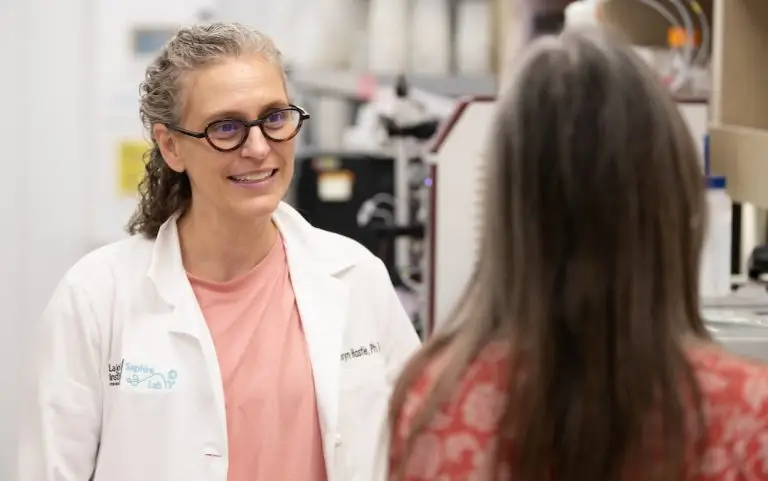
With new funding, LJI scientists will help lay the groundwork for faster vaccine and therapeutic development
A new look inside Ebola’s ‘viral factories’
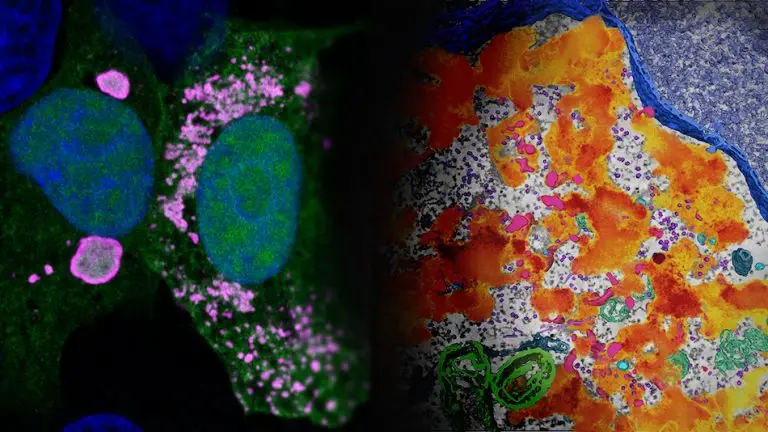
LJI researchers reveal a hidden side of how Ebola virus replicates inside host cells
Virologist Onyeka Chukwudozie wins support for international collaboration
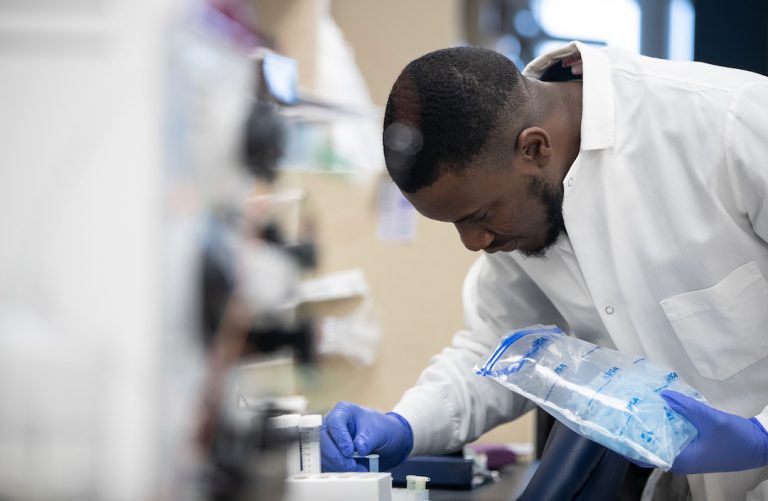
New Merkin Fellowship to support U.K. collaboration on Lassa virus research
Even as SARS-CoV-2 mutates, some human antibodies fight back
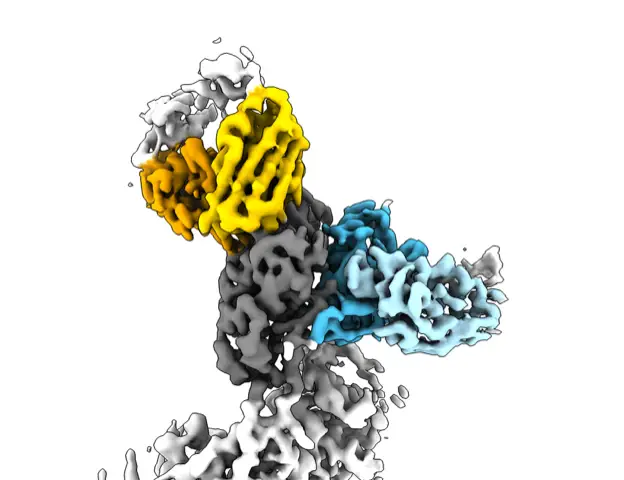
A 'cocktail' of human antibodies shows promise in fighting severe SARS-CoV-2 infections
We’ve learned a lot from lymphocytic choriomeningitis virus—now the time has come to fight it
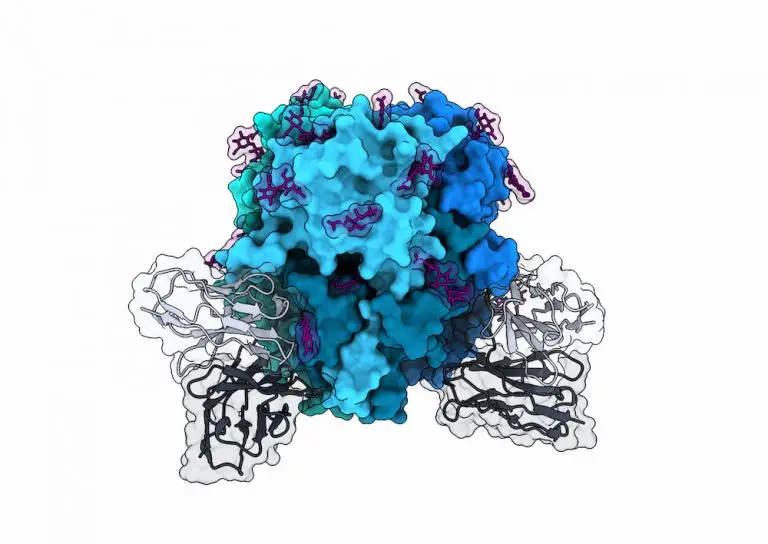
LJI scientists share high-resolution view of the lymphocytic choriomeningitis virus (LCMV) glycoprotein together with a neutralizing antibody
LJI scientists uncover the structure and function of Inmazeb, the first FDA-approved drug for Ebola virus infection
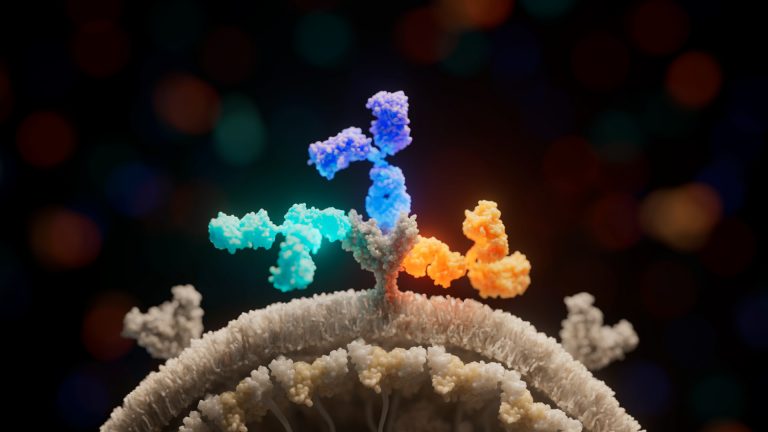
New findings emphasize the benefits of antibody cocktails over monotherapy approaches
Durable SARS-CoV-2 antibodies bind to two viral targets at once
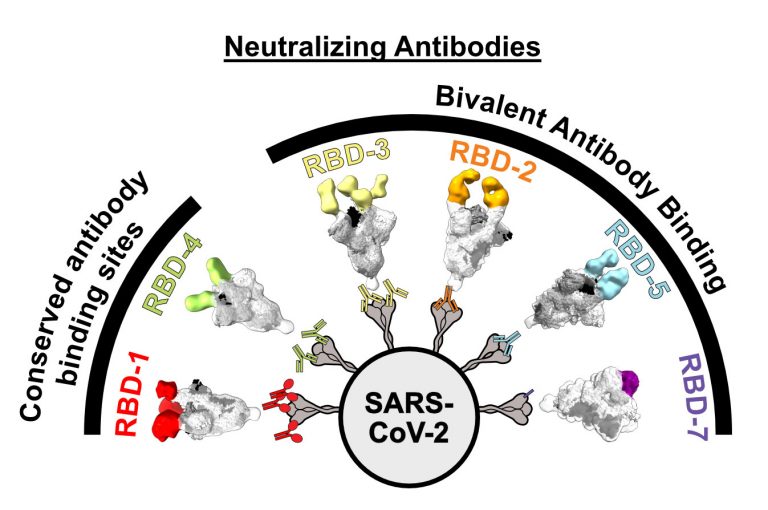
"Bivalent" antibodies can continue to neutralize Omicron and Omicron lineages
New Lassa fever therapy may be on the horizon
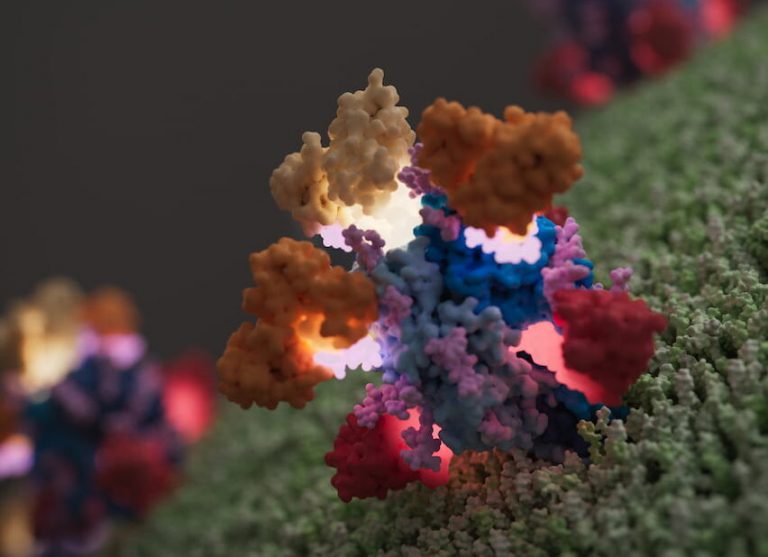
Three rare antibodies, combined in a "cocktail," are effective in fighting Lassa virus
Putting the brakes on “budding” viruses
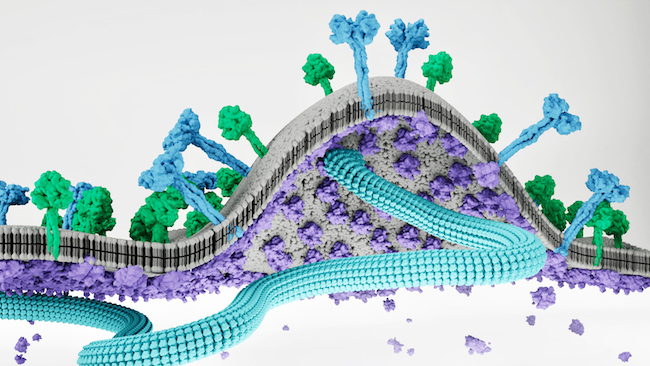
New measles, Nipah research offers a window into viral assembly
LJI scientists discover clue to stopping Lassa virus infection
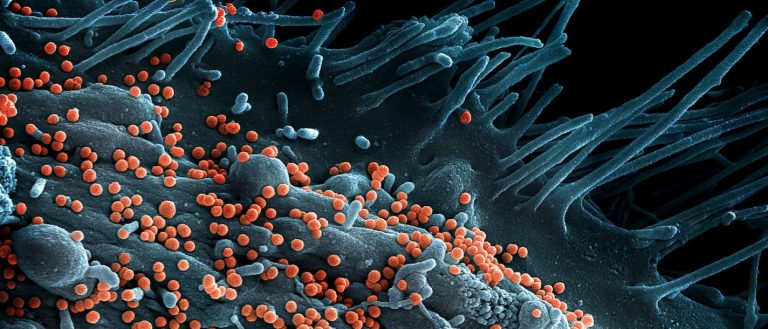
New study shows how new therapies might target Lassa and Ebola viruses
Rethinking the rabies vaccine
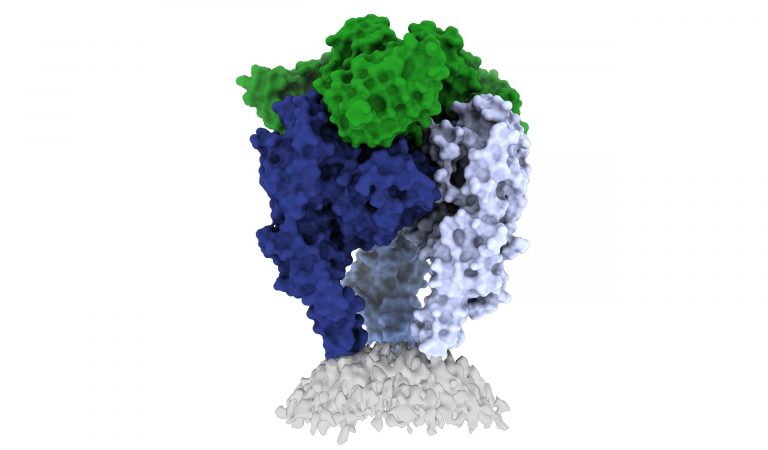
LJI scientists, in collaboration with researchers from the Institut Pasteur in France, capture new high-resolution view of rabies virus, revealing potential vaccine targets
The sky, the sea, and Ebola virus

Jingru Fang shares how her Ph.D. research inspired a vivid painting
Targeting a human protein may stop Ebola virus in its tracks
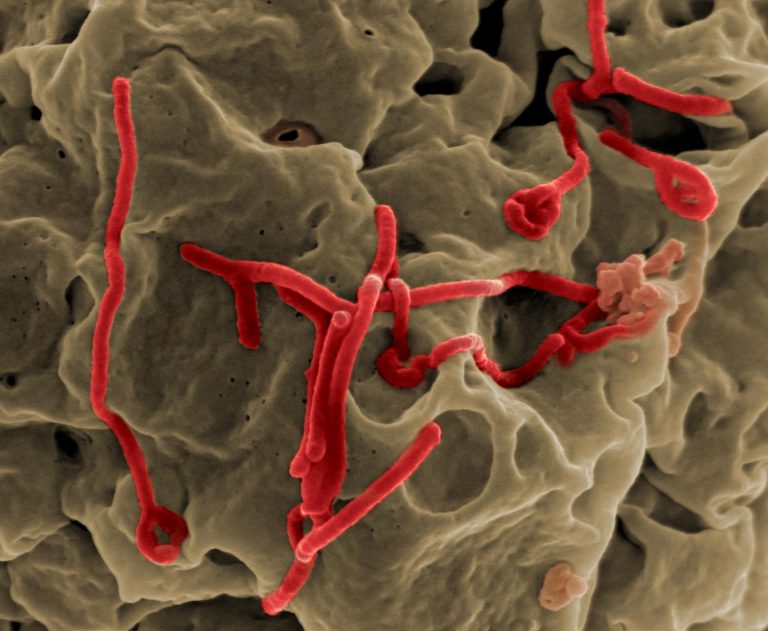
To treat Ebola virus infections, researchers are taking a close look at a key piece of the virus: polymerase.
Op-Ed: What will it take to make a universal COVID vaccine?

As California emerges from Omicron, other places are again in lockdown or facing record caseloads after trying and failing to
Promising antibody cocktail takes on Ebola virus—and its deadly cousin

LJI team uncovers how one odd antibody does some heavy lifting
Erica Ollmann Saphire receives $2.6 million grant to collaborate on pan-coronavirus vaccine
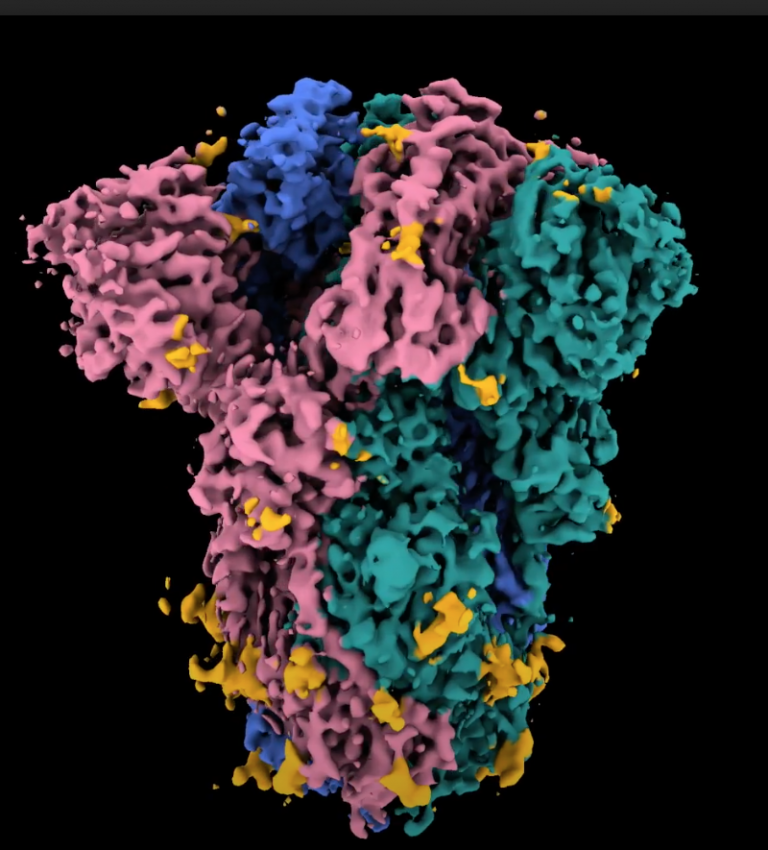
La Jolla Institute scientists team up with Brigham and Women's Hospital to guide the development of vaccines against the coronavirus family
Lungs of COVID-19 survivors teem with virus-fighting ‘memory’ cells
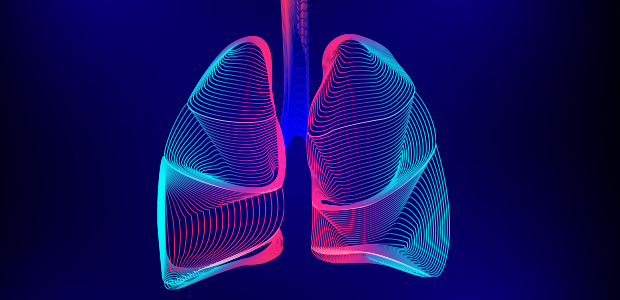
Even elderly survivors show a strong, persistent immune memory
From Alpha to Epsilon: Consortium study illuminates surfaces of Spike most resistant to antibody escape
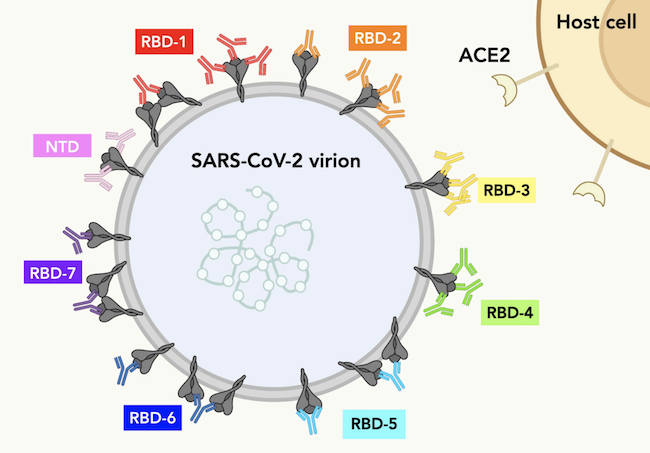
LJI-led Coronavirus Immunotherapeutic Consortium identifies antibody 'communities' with power to stop SARS-CoV-2 variants
A biochemist takes on Lassa virus

Adrian Enriquez, Ph.D., has a different way of looking at viruses
The new CEO of the La Jolla Institute for Immunology ascended by lifting others
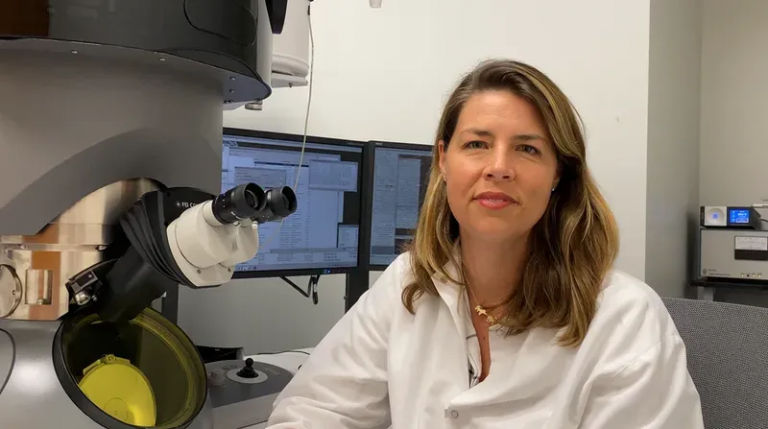
Erica Ollman Saphire brings together scientific competitors to find new antibody therapeutics for COVID-19.
Shape-shifting Ebola virus protein exploits human RNA to change shape
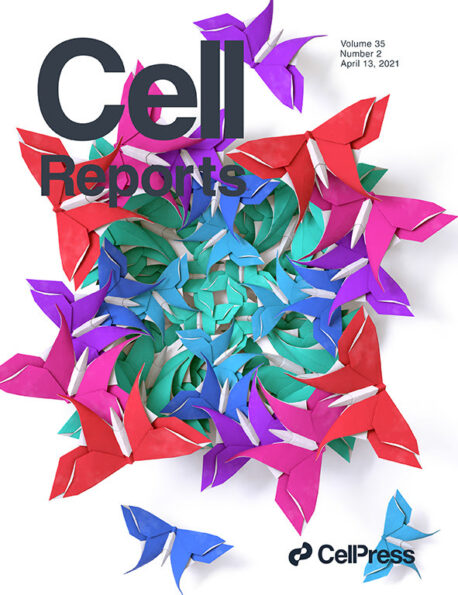
New study highlights VP40 as a promising therapeutic target
Erica Ollmann Saphire appointed president and CEO of La Jolla Institute for Immunology

La Jolla, CA—Erica Ollmann Saphire, Ph.D., has been appointed President and CEO of La Jolla Institute for Immunology (LJI), the Institute announced today.
Leinco Technologies, Inc., and La Jolla Institute for Immunology announce license agreement to develop novel COVID-19 diagnostic tools

LA JOLLA, CA— La Jolla Institute for Immunology (LJI), one of the leading research organizations dedicated to studying the immune system announced today that it has signed a licensing agreement with Leinco Technologies, Inc., a premier developer and manufacturer of leading-edge recombinant proteins,…
Experts torn over changing vaccine doses to speed up lagging rollout

To speed inoculations, the U.S. plans to release all available vaccine doses and open access to anyone over 65. Others suggest straying from recommended doses or intentionally delaying boosters. The best way forward remains uncertain.
Erica Ollmann Saphire named Scientist of the Year by ARCS San Diego
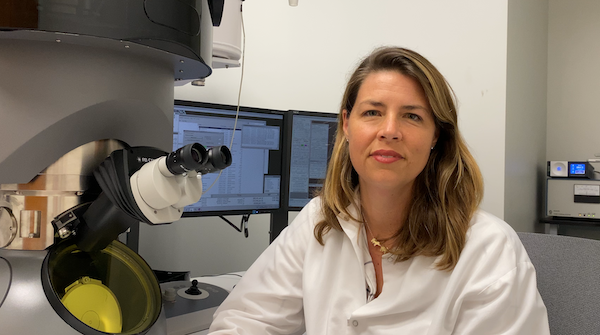
Award recognizes Saphire's leadership in global effort against COVID-19
3 things we know (and 3 we don’t) about Pfizer’s initial COVID-19 vaccine results

San Diego scientists and trial participants are cautiously optimistic after early reports that Pfizer’s COVID-19 vaccine is highly effective
LJI Professor Erica Ollmann Saphire awarded $6.4 million for international efforts to beat COVID-19

The National Institute of Allergy and Infectious Diseases (NIAID) has awarded more than $6.4 million to Dr. Saphire to support research toward COVID-19 antibody therapeutics.
La Jolla Institute for Immunology receives $1 million from GHR Foundation in support of COVID-19 research
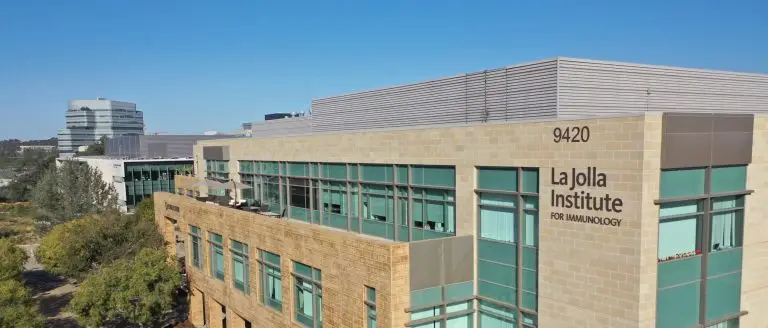
LA JOLLA, CA – La Jolla Institute for Immunology (LJI) has announced a $1 million gift from GHR Foundation, an independent global philanthropy based in Minneapolis, MN. This significant gift will support the work of the Coronavirus Immunotherapy Consortium (CoVIC), a global partnership headquartered…
From Wuhan to San Diego—How a mutation on the novel coronavirus has come to dominate the globe
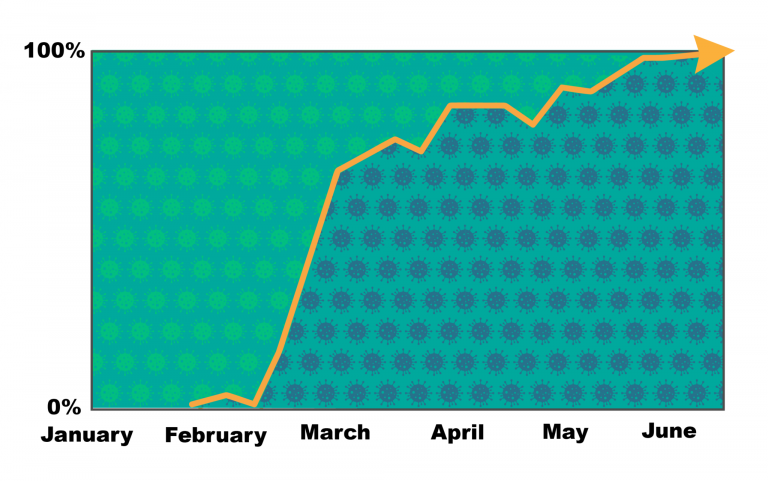
A small variation has made the novel coronavirus fitter—but not more deadly
LJI’s Erica Ollmann Saphire receives $100,000 Fast Grant for COVID-19 research

Antibody therapeutics will likely be a critical tool for protecting frontline healthcare workers and those at most risk of SARS-CoV-2 infection
La Jolla Institute for Immunology acquires Berkeley Lights Beacon® platform
The Beacon optofluidic technology will be used to speed the identification of lifesaving treatments for deadly viruses including Ebola, Lassa and others.
Lassa virus’ soft spot revealed
Detailed structural studies provide blueprint for the development of potent therapeutics and vaccines
La Jolla Institute-led consortium awarded up to $35 million by NIH
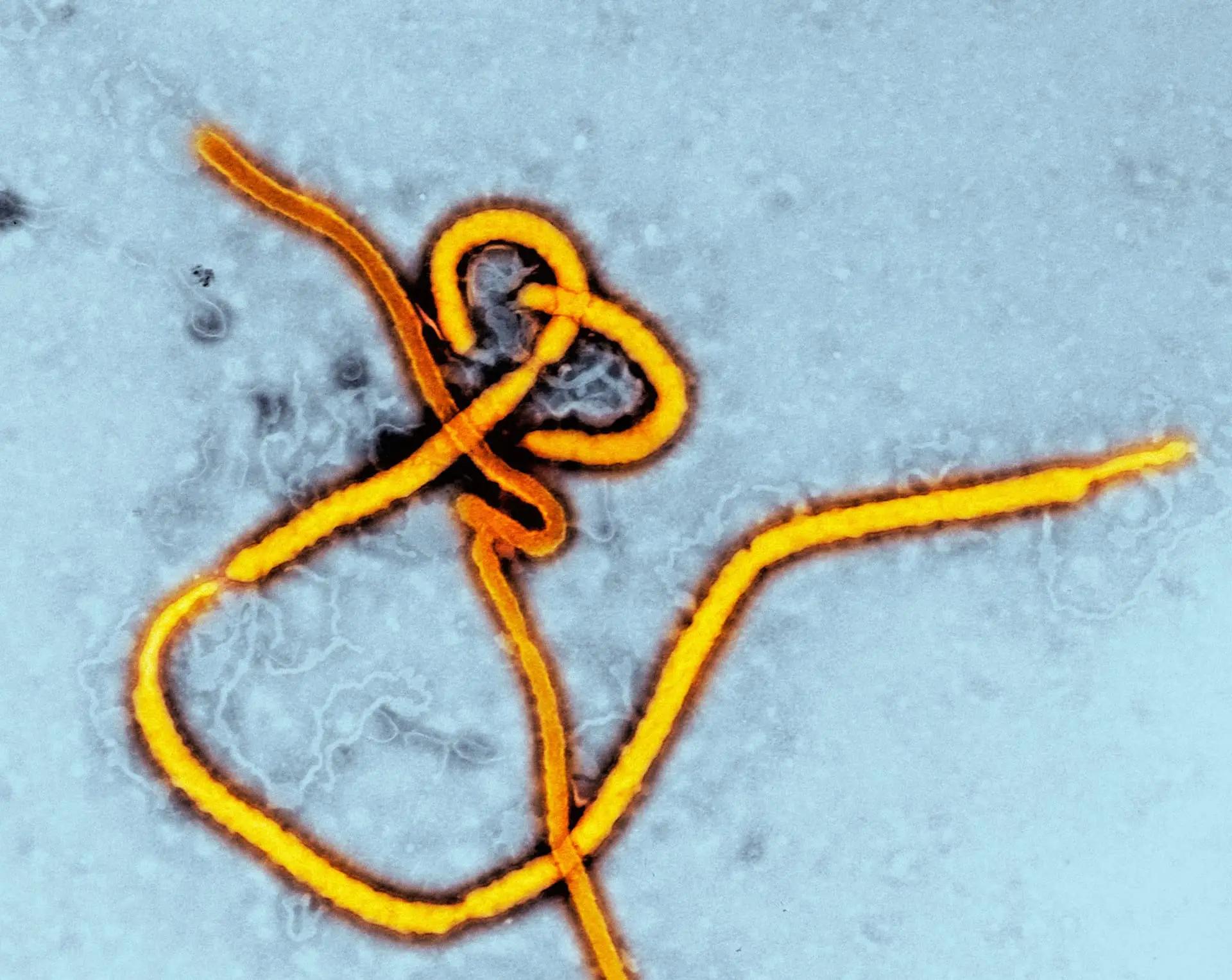
The grant establishes the global Viral Immunotherapeutic Consortium to develop new treatments for Ebola, Lassa and other viral threats
Leading Structural Immunologist Erica Ollmann Saphire will join La Jolla Institute for Immunology

"She is a truly exceptional scientist, who uses molecular insights to bring together scientists and policymakers for scientific advancement and social change"

